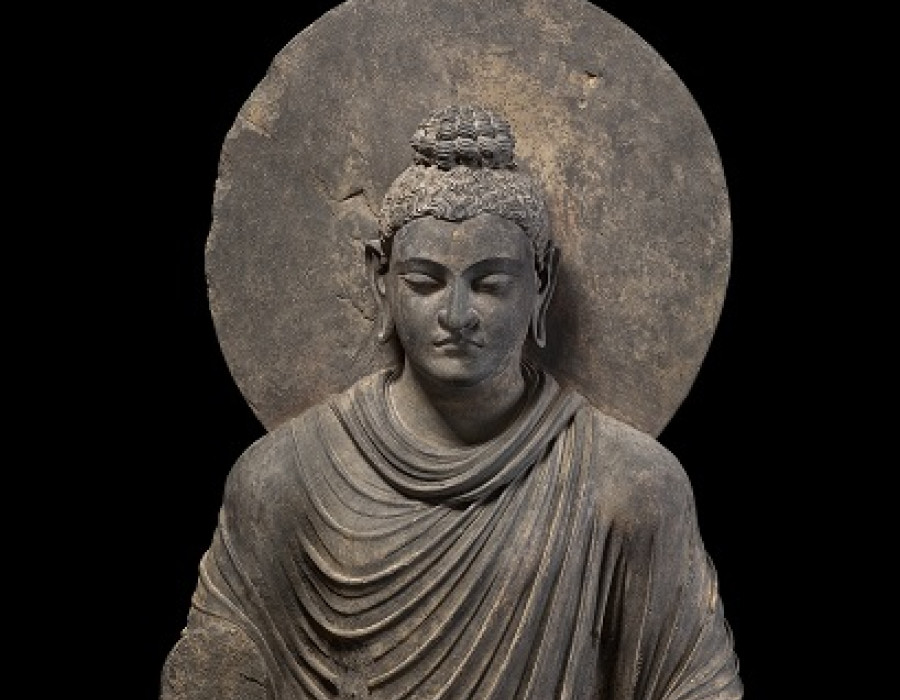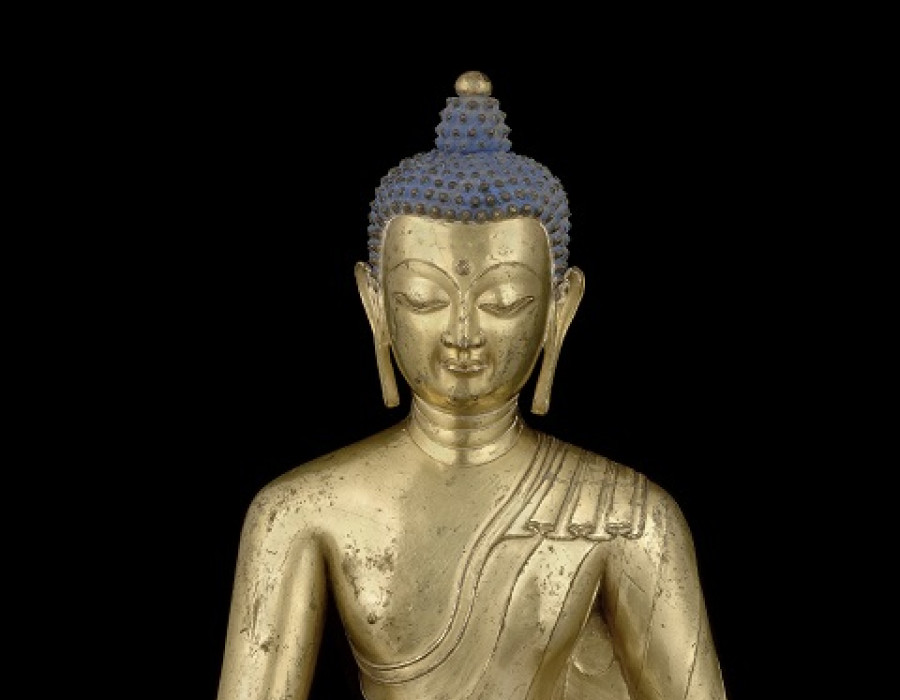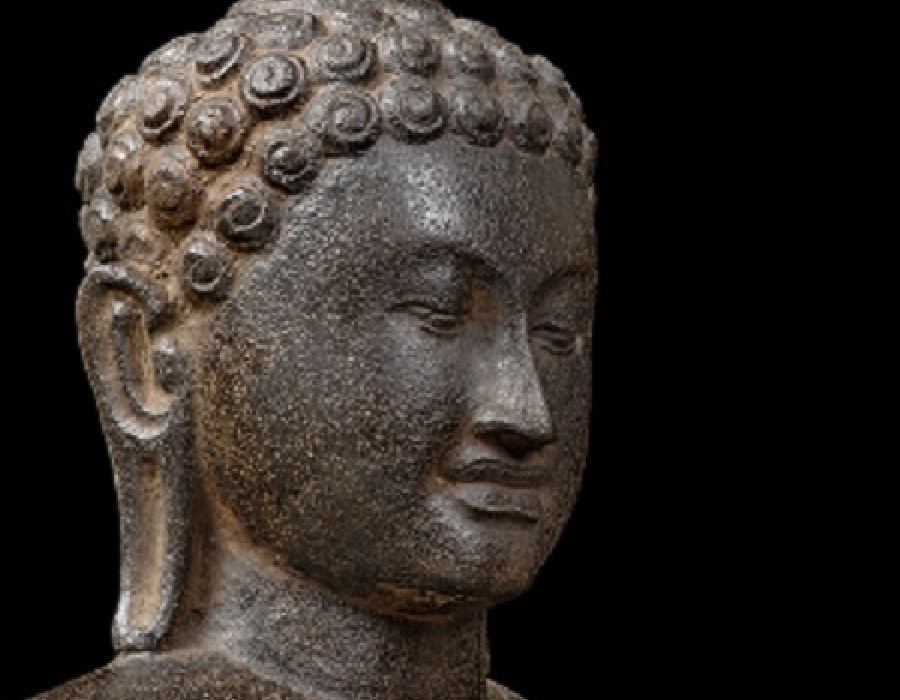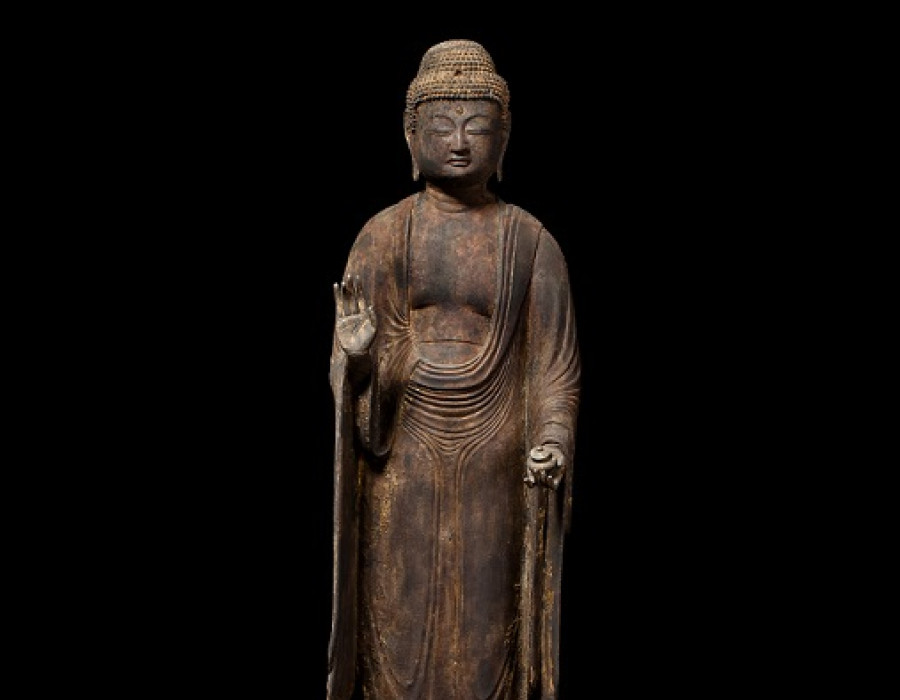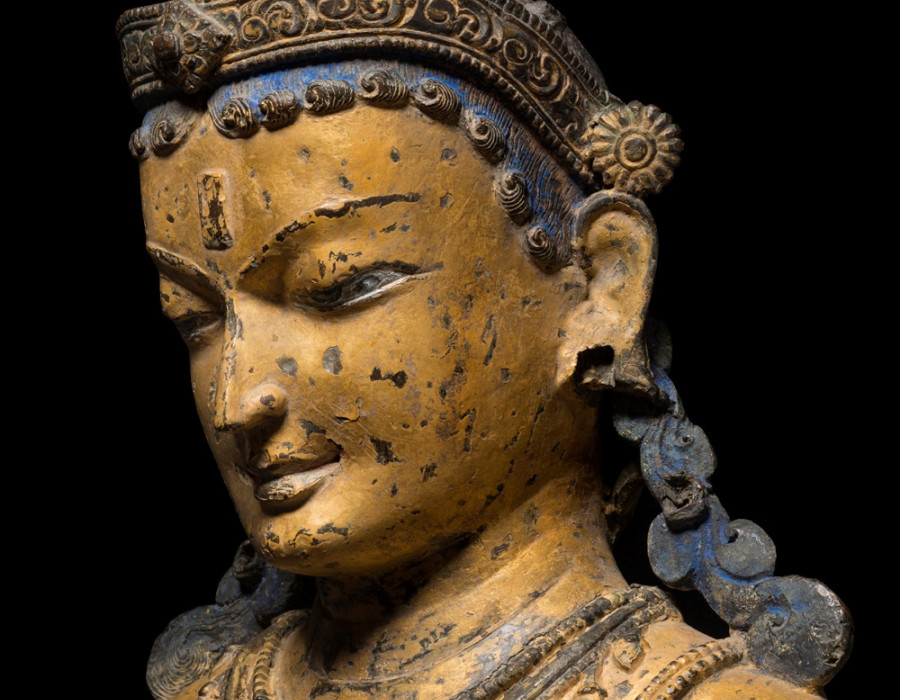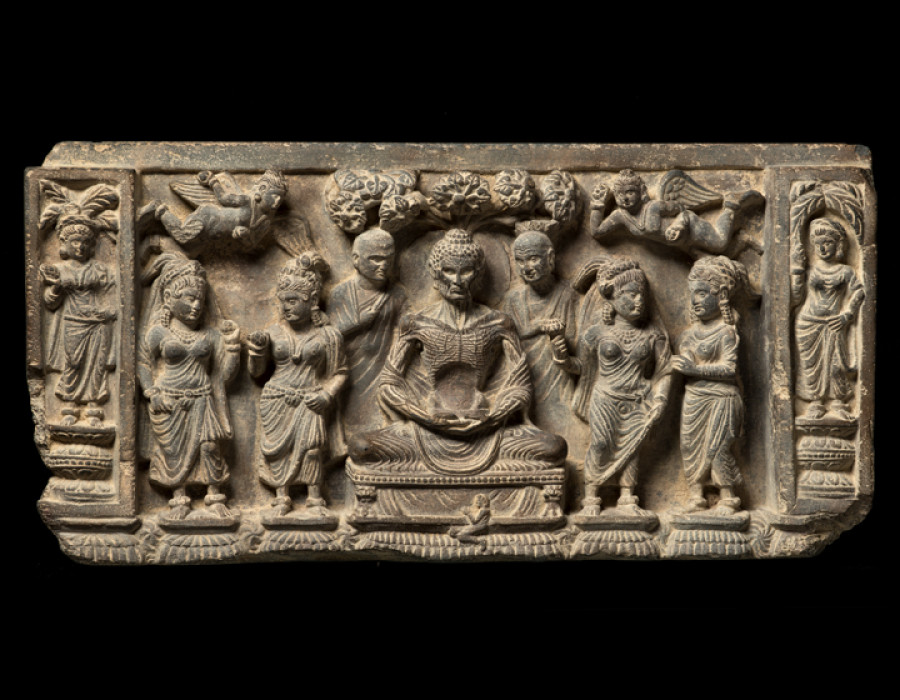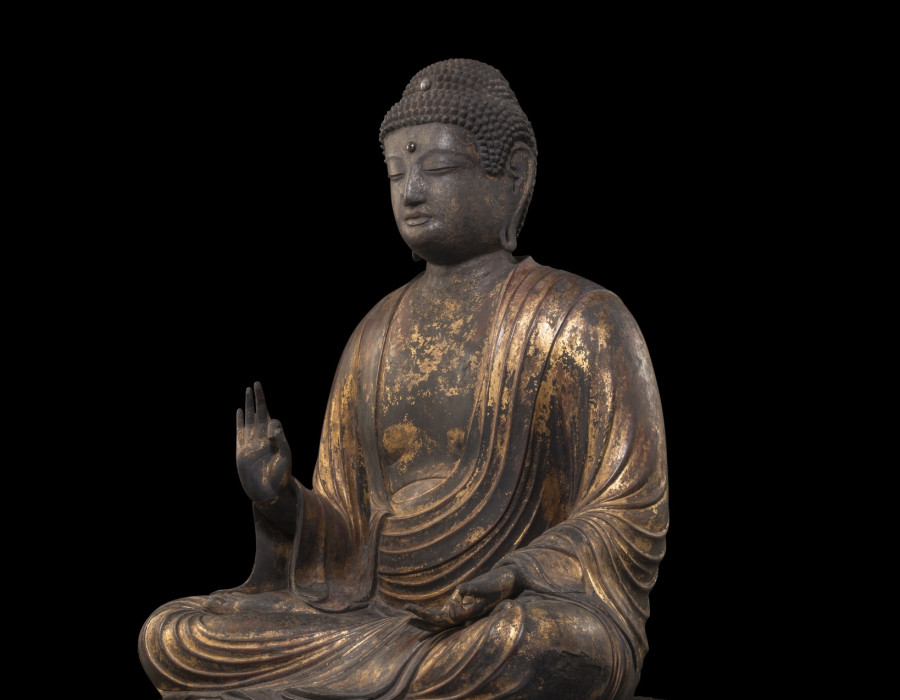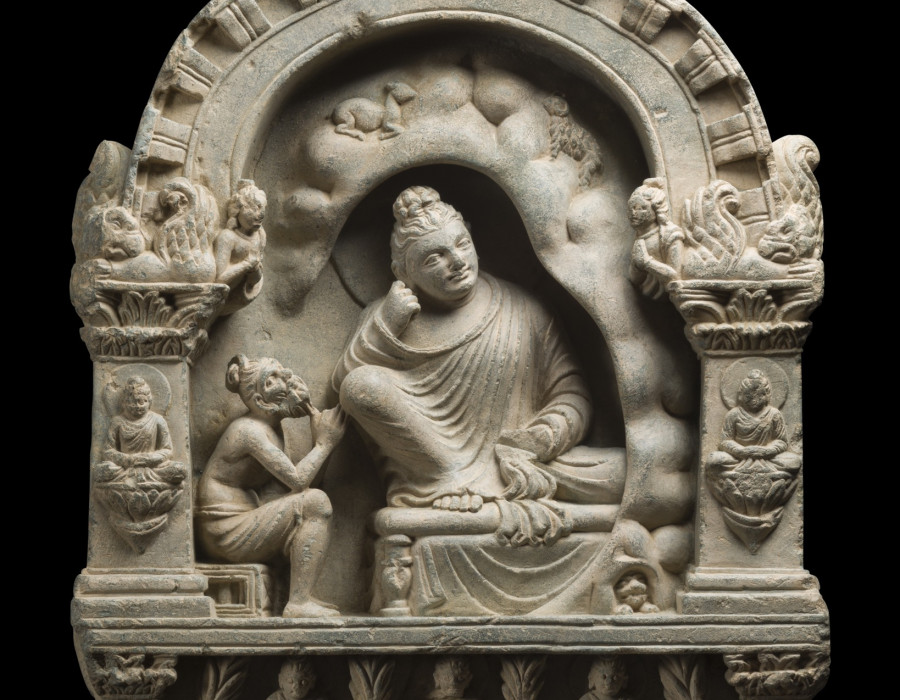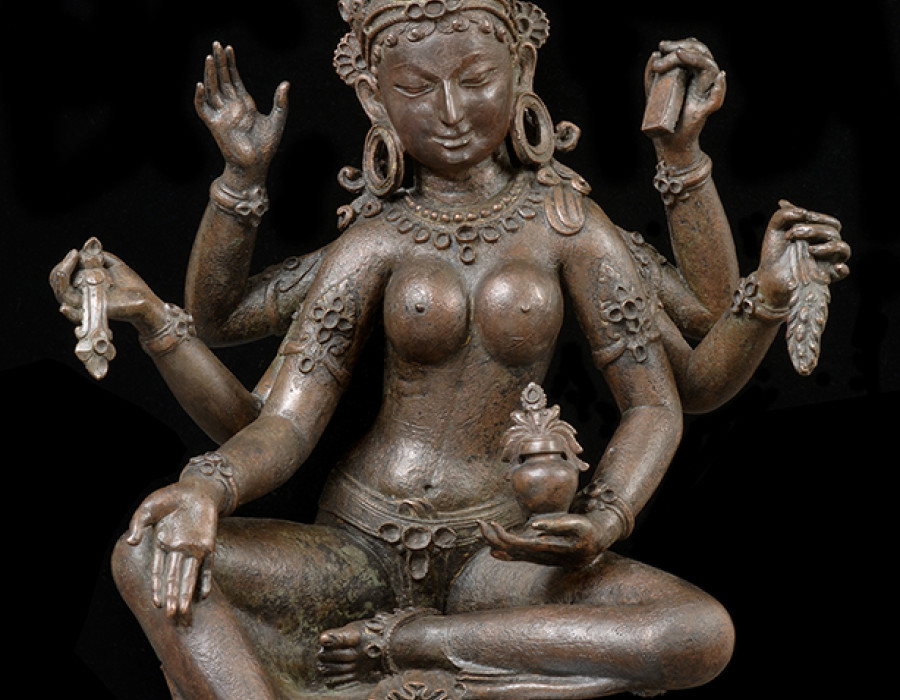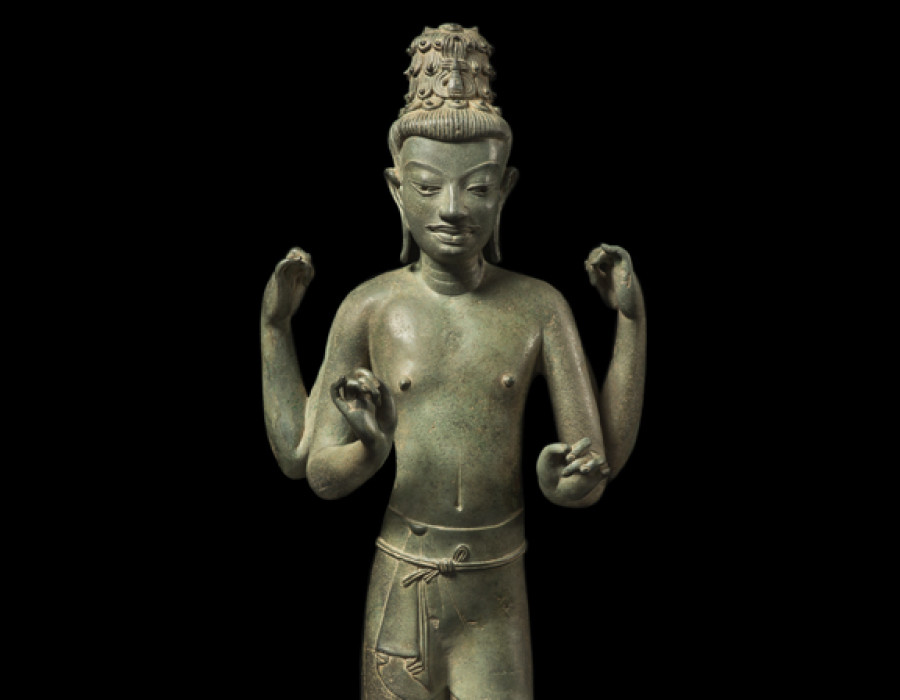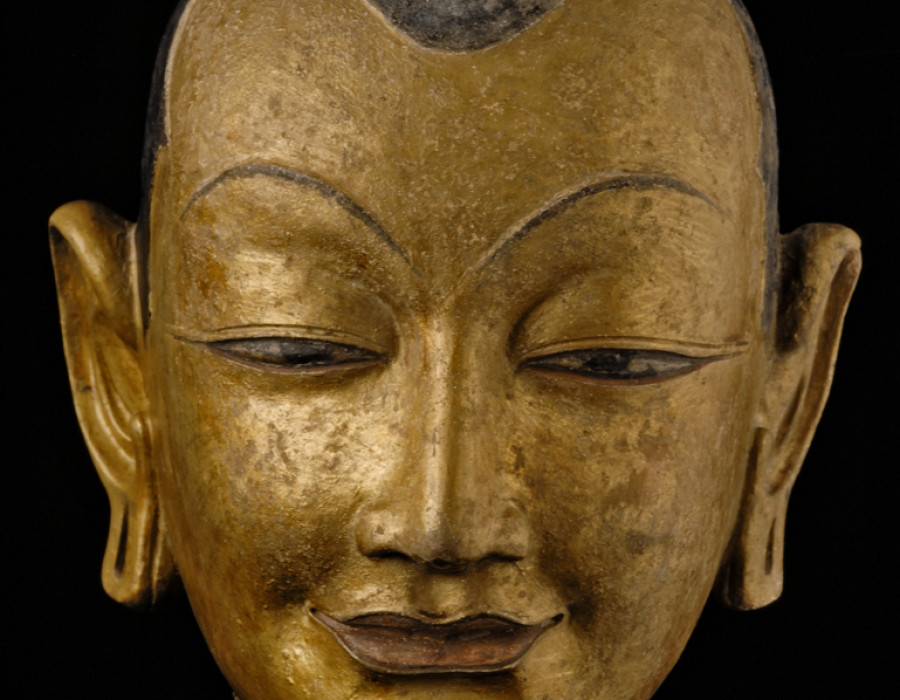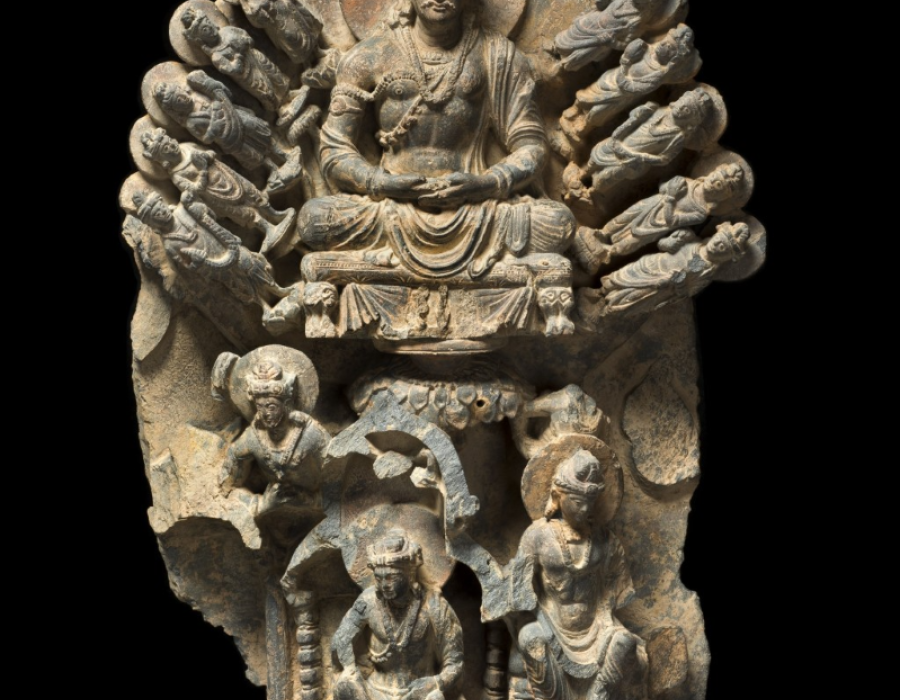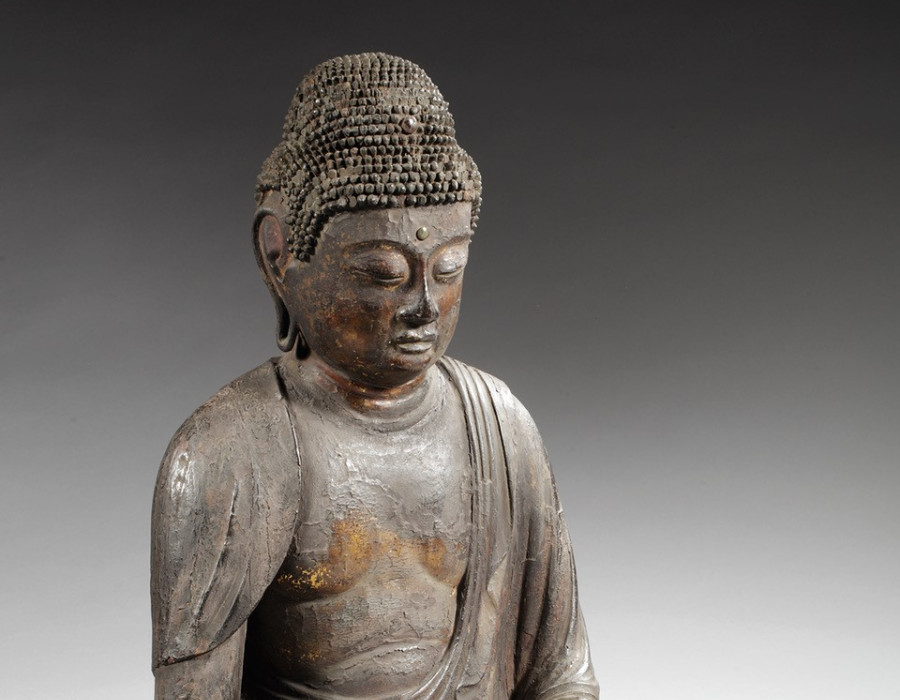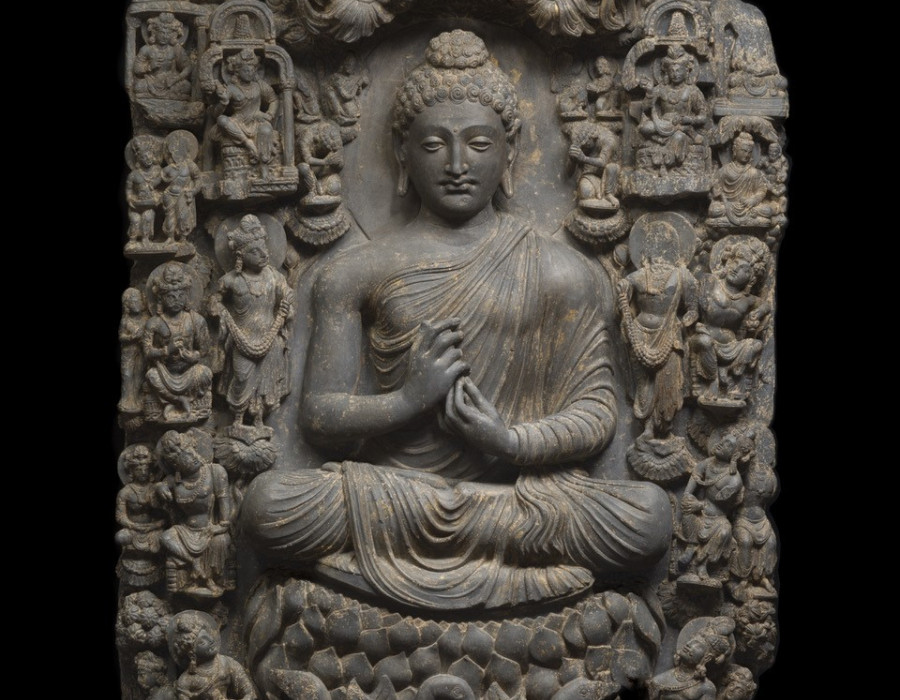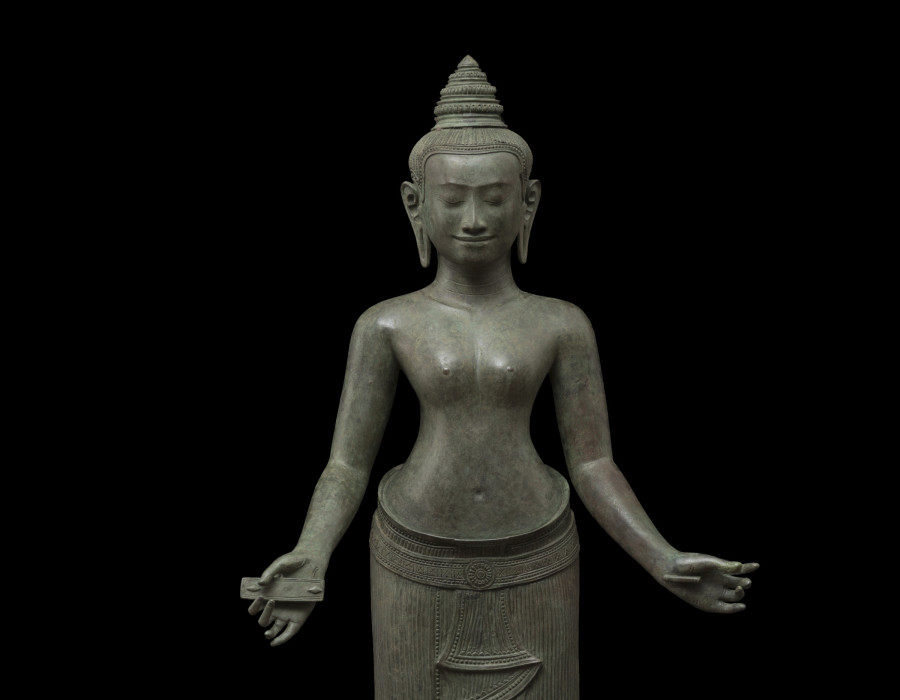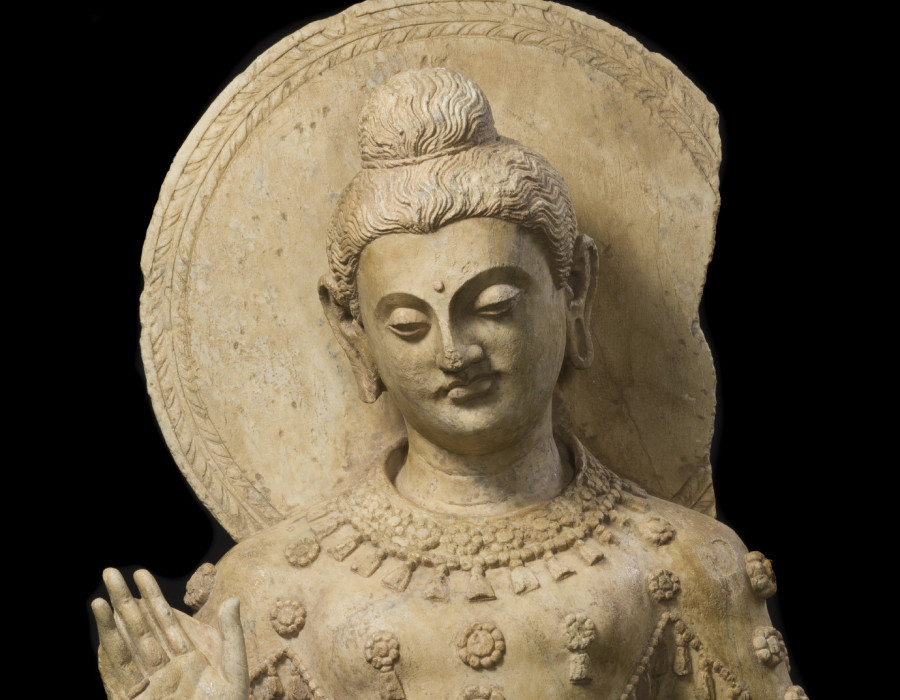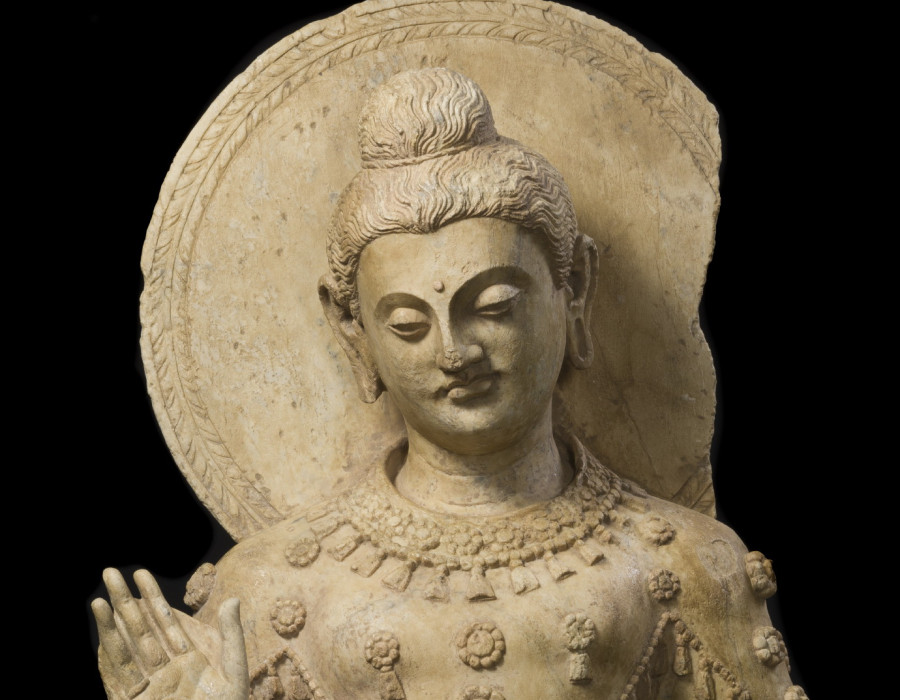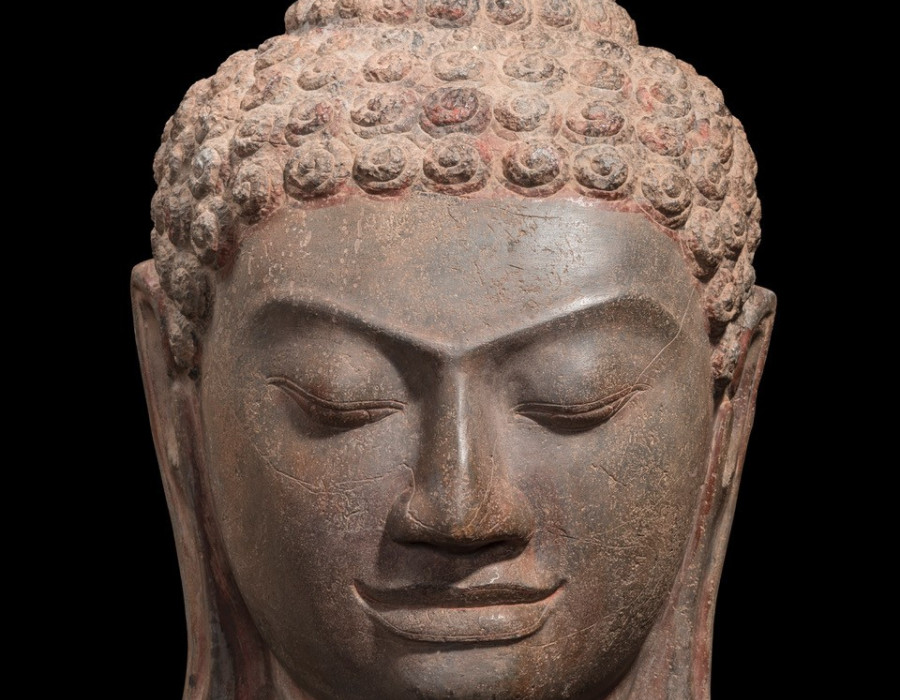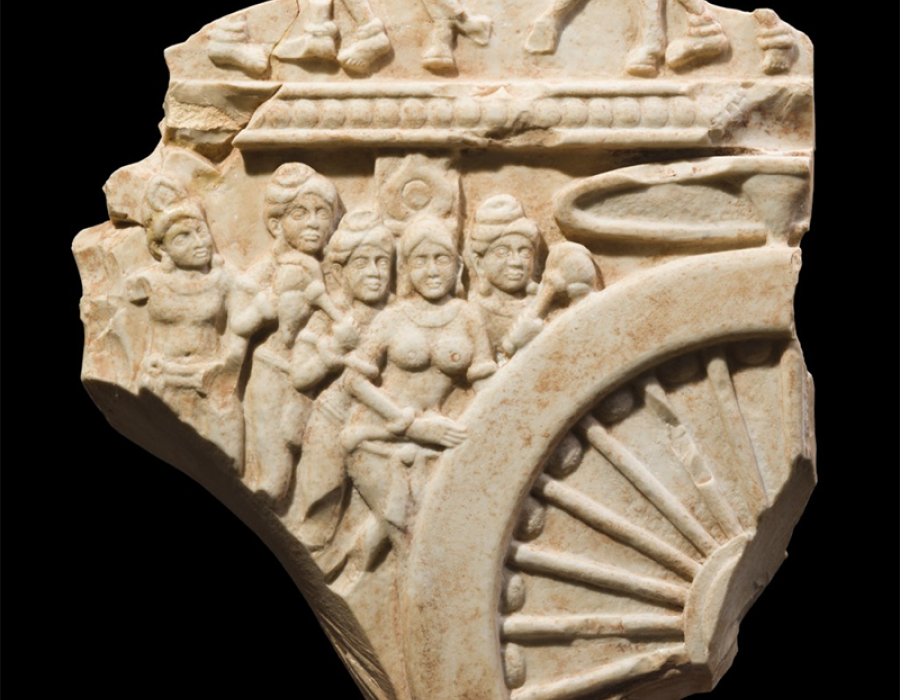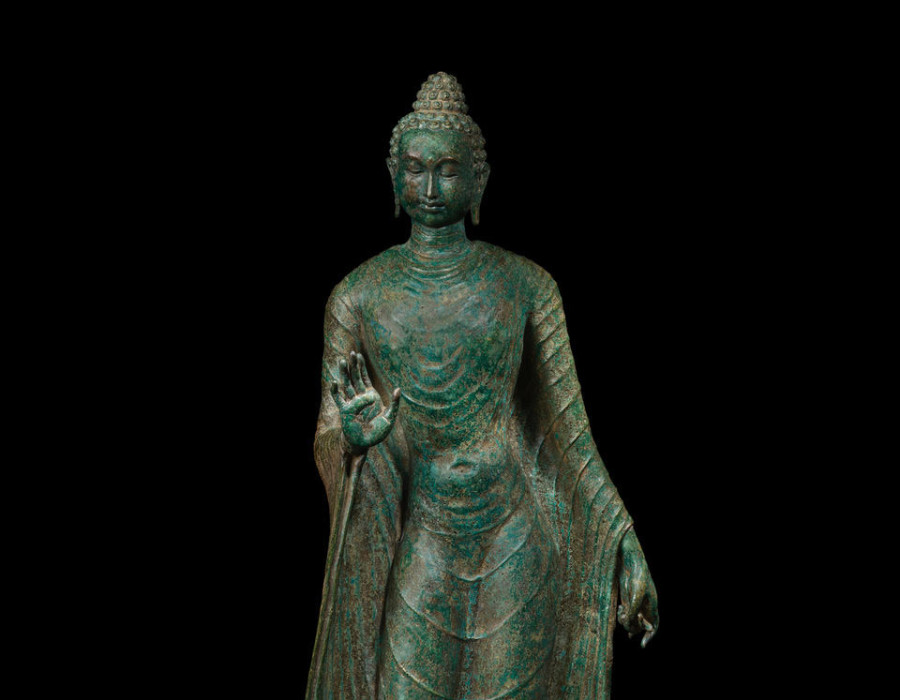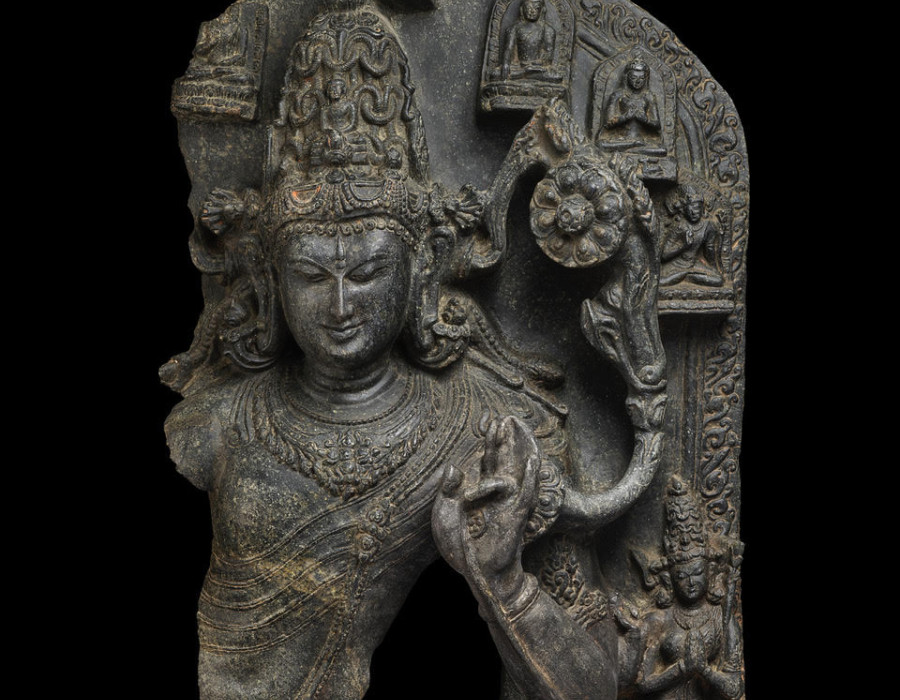
Martin Goodson
Maitreya Buddha: Thailand c. 8th century C.E
Images of Truth
On the border of Thailand and Cambodia, bodhisattvas rather than Buddhas seem to have been the focus of worship during the 7th-9th century CE.

The future Buddha Maitreya “Prakhon Chai” style
John Eskenazi
Maitreya
Eastern Thailand, Khorat plateau (kingdom of Chanasa)
8th/9th century
Bronze
Height 50cm
The statue belongs to a group that are often referred to as being of “Prakhon Chai” style, indicating that they originate from the kingdom of Chanasa in Khorat, a mountainous region bordering eastern Thailand and Cambodia. Buddhism spread over an enormous geographical area and was adopted by diverse groups of people who reworked it to suit their specific religious needs, with isolated communities evolving unorthodox beliefs that combined the faith with their existing, pre-Buddhist traditions. This appears to have been the case in Chanasa where bodhisattva statues greatly outnumber images of the Buddha, implying that they may have been the focus of worship. The beliefs that flourished in 7th to 9th century Chanasa seem to have been extremely localised as the statues found there are quite unlike any others. In particular, Maitreya, the Buddha of the Future and Avalokiteshvara, the embodiment of compassion, are represented in the bronze images of Prakon Chai. In every case, the bodhisattvas are represented as youthful ascetics, slender of limb, wearing simple garments and unadorned apart from their elaborately arranged chignon of matted locks, which becomes increasingly crown-like over the course of time.

The future Buddha Maitreya “Prakhon Chai” style
John Eskenazi
Buddha-to-be, Maitreya, shares the same etymology as ‘maitri’ or ‘goodwill’ the first of the Divine Abodes. These four qualities – goodwill, compassion, sympathetic joy and equanimity – belong to those beings who have ‘gone beyond’ to the other shore and who no longer see the world in terms of ‘self’ and ‘others’.
The attainment of full Buddhahood is said to be the result of three great aeons on the Path of Enlightenment ending in a period of waiting in a heavenly realm before descending into the womb for the final rebirth.
According to tradition, although Maitreya currently abides in this heavenly realm; he is accessible to us. It is said that one of the great pinnacles of Mahayana Buddhism – the doctrines of the Yogacara school – were revealed to their founder, Asanga, when he visited Maitreya in mediation practice.

The future Buddha Maitreya “Prakhon Chai” style
John Eskenazi
This youthful figure has his life before him and as Maitreya was prophesied to come when the teachings of Shakyamuni Buddha had long vanished, signals the prospect of renewal.
It was Mahayana Buddhism that proposed that in time all beings would attain Buddhahood and that all beings possess within them the seed of complete and perfect Enlightenment. It is fitting, therefore, that this youthful figure of hope points to his own fulfilment as well as the fulfilment of each and every sentient being.
Images of Truth
Buddhist art and iconography

